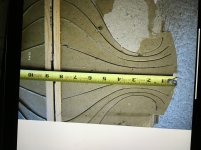Hello. Here is image (but cannot find its source) of lens pattern for New (2001) Model 2 made from Microspheres and Epoxy resin with improvements as say the official site.
View attachment 920749
View attachment 920749
Thanks ! I think i have seen this image on the Bev.com website before. After beeing scaled to the actual size it will reshape the entire loudspeaker i guess. Then i better build one from scratch as you did.
@Ted, do you have some pictures of your project?
It would be inspiring for me and others i guess.
Best wishes,
Frank
It would be inspiring for me and others i guess.
Best wishes,
Frank
I do but I am having trouble inserting them into this reply. They are either too large or show up as jpg origin which won't open. I'm not sure what to do next.
Ted
Ted
I am not very facile at using computers.The one way I have been able to send photos is via email or by messaging on cellphones . For some reason nothing I have tried has worked in this system. I am sure it's my lack of computer savvy.
Ted
Ted
Hello Frank, I will have my son help me later this evening after his workday. He design's programs for the internet so should be able to figure out what I am doing wrong. To answer one of your prior questions, I built my ESL panels using 20 gauge sheet metal stators (about 300mmX1200mm.) They have about 40% open area and the membrane to stator spacing is approximately 1.6mm. I have photos how everything goes together and the end result which I will send as soon as I can do it. One of the interesting details I discovered was that with my hybrid design the best crossover point was 500Hz. I started out much lower at 250-300Hz but the best responses and blend with my midwoofer was at 500Hz. I also use 6.5" woofers known for very low harmonic distortion and a low Fs. They are mounted in a short TL (1200mm) which is heavily damped and as a result the bass is limited to approximately 60Hz. Since I love Mahler symphonies and grand organ music I supplement the deep bass with a subwoofer. This is different than most other hybrid designs I have seen online which use much larger woofers and lower crossover points. I have the philosophy that the best blend for hybrid ESL design's should be with smaller (quicker) drivers rather than larger 12" woofers. The result is that I cannot hear the transition between the ESL and the midwoofer. I utilize an electronic crossover at 24db/octave. Another difference with my DIY design and the original Beveridge lens's is the sound distribution. The 2SW was designed to be 180degrees. I am not sure about the model 5's. I felt that 120-140 degrees would work as well and have several advantages over the earlier design. It would make construction of the lens easier with less severe terminal curves and may make it easier to adjust room acoustics. The wall of sound and depth of sound in my version seems to be the same as I remember when living with the 2SW and the bass is improved. Since The Beveridge type of system is closed back and technically not bipolar in the same way as many ESL designs, I don't use open back woofer's like Linkwitz advocates for his speakers or Charlie (Jazzman) does with his subwoofer. With best wishes,
Ted
Ted
Thanks a lot ! these look great !!!
They are different but i assume they play just wonderfull.
Best regards, Frank
They are different but i assume they play just wonderfull.
Best regards, Frank
Thanks, Ted for the great info about how you designed your ESL's ! I can imagine that the SPL can go up if you do not use them in full range. I too used ESL from 500Hz upwards with some good dynamic loudspeakers (B&W Model 70). Indeed it can go very well together. Now i am a bit spoiled and do not like this combination anymore (i use Acoustats mainly now as they can go subsonic). I also like organ music and choir so imaging is key here. I guess i will try to build new speakers as you did and use ESL-subs instead (my trusty Acoustats as they have NEVER let me down and i have them almost 30 years now, only the amps needed replacements). Also the Beveridge amps needed rebuilding.
Later i have rebuild the amps with only tubes, no hybrid. The sound is much better without transistors in the sigbal path but that is my personal opinion.
Later i have rebuild the amps with only tubes, no hybrid. The sound is much better without transistors in the sigbal path but that is my personal opinion.
Attachments
Hi Frank, Thanks for the photos showing your listening setup. I have never lived with Acoustats so I don't know what their sonic signature is like. I did own Soundlab full range ESL's some years ago which did have good bass at least for some music, but for Organ or other music with very deep bass, I still needed a subwoofer for a proper sense of impact. They also required a lot of amplifier power (500-750 watts) to function at decent loudness as they were very inefficient. That convinced me that hybrid designs made much more sense both for speaker efficiency and bass impact. In your photo, I noticed that the Beveridge 2sw speakers were against a back wall behind the Acoustats. Was this the placement you used when listening to them?
Best wishes Ted
Best wishes Ted
As i listen to the Acoustats mainly (actual only) i have placed the Beveridges against the back wall. This picture was taken 15 years ago. Now i have a different listening space where i have added some more panels from ceiling to the floor. This gives even deeper bass response. The panels are all connected to one direct drive amp (so dual mono). There is enough power to drive them all and i could even add some more panels if i wanted to. Driving ESl's directly requires less current as the tubes match quit well with the small capcitive load. Using a transformer will "magnify"this capacitance depending on the ratio. So a standard poweramp will see a relativily big capacitor. Additionally all components in between the amp and the panel need to be able to handle this power as well.
Attachments
- Home
- Loudspeakers
- Planars & Exotics
- Rebuilding Beveridge Circuit Board Stators
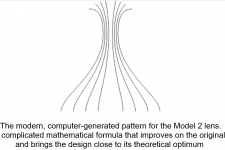
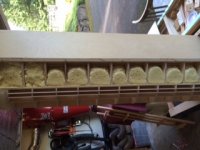
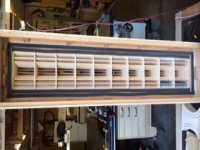
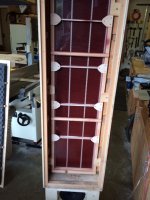

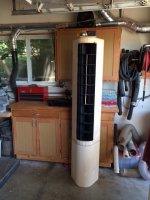
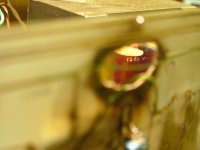

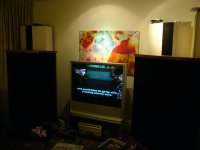
![UPGV5040[1].JPG](/community/data/attachments/835/835166-0499c9f6ff9d20097b69949b2db723bb.jpg?hash=BJnJ9v-dIA)
![ASTT7635[1].JPG](/community/data/attachments/835/835172-5364bd6a7b33c3613826575c6c20cf77.jpg?hash=U2S9anszw2)

